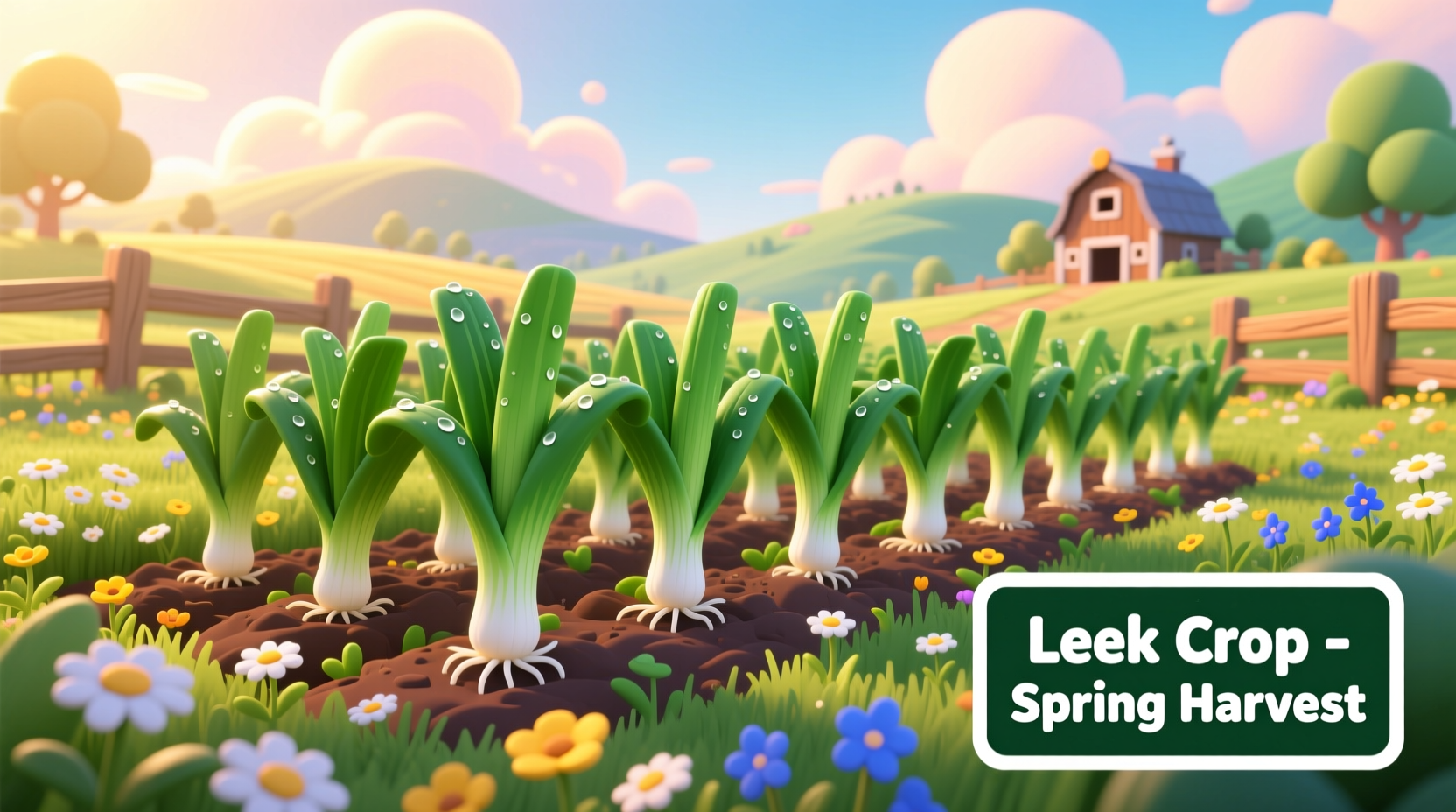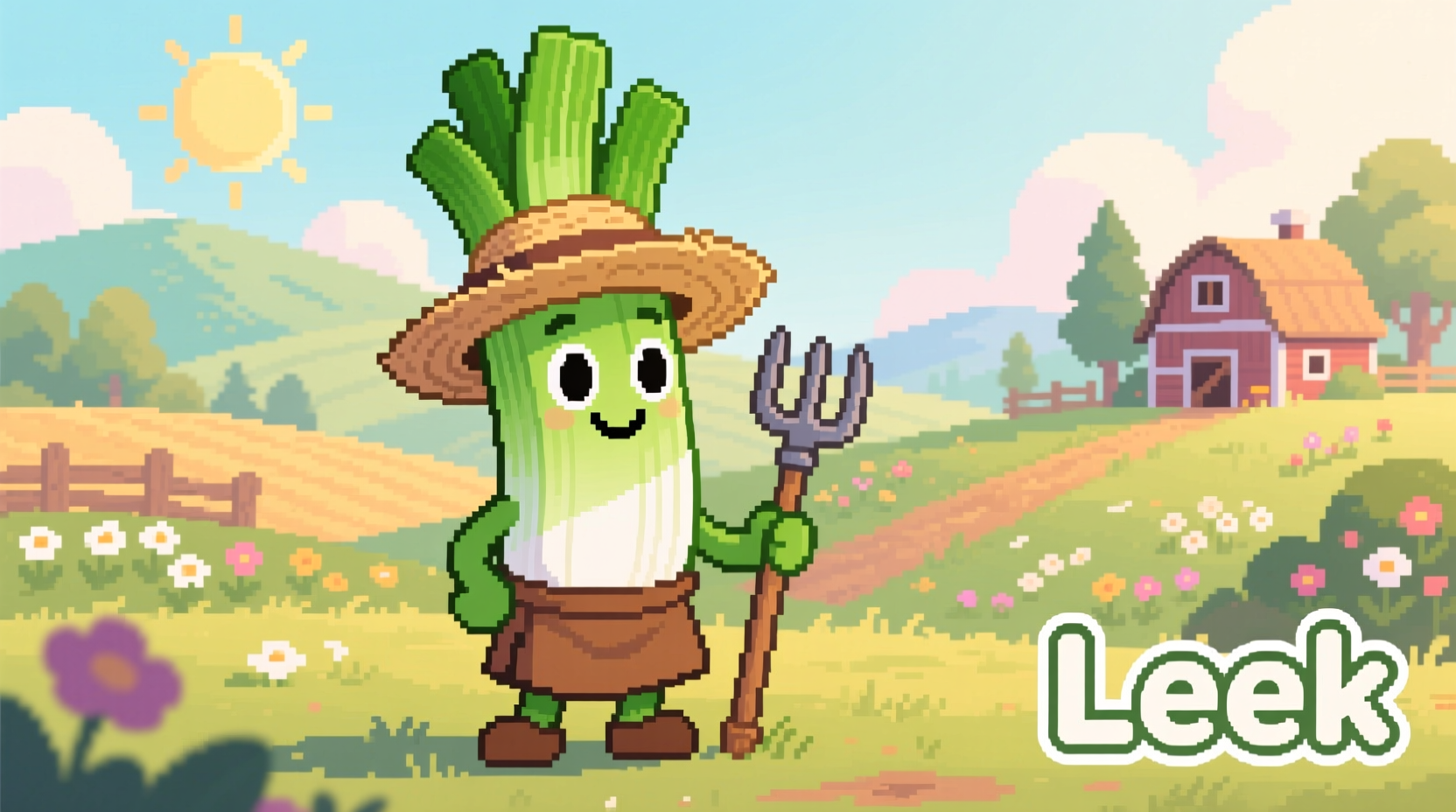For Stardew Valley farmers looking to maximize their spring season, understanding leeks is crucial. These versatile crops offer multiple benefits beyond simple profitability, serving as key ingredients for community bundles, cooking recipes, and villager gifts. This comprehensive guide reveals everything you need to know about leeks in Stardew Valley—from where to find them to advanced strategies for incorporating them into your farm's success.
What Exactly Are Leeks in Stardew Valley?
Leeks (Allium porrum) represent one of the most accessible foraging items in Stardew Valley. Unlike most crops, you don't need seeds to obtain your first leeks—they grow wild throughout the Cindersap Forest starting on Spring 15. Each patch yields 1-3 leeks when harvested, with a chance to regrow after 7 days.
When farming leeks from seeds (available at Pierre's General Store for 30g each), they follow standard crop mechanics:
- Growth cycle: 4 days to maturity
- Harvest: Single harvest (no regrowth)
- Sell price: 60g (normal), 90g (silver star), 120g (gold star)
- Season: Spring only
| Crop | Growth Days | Base Price | Profit/Day | Special Properties |
|---|---|---|---|---|
| Leeks | 4 | 60g | 15g | Wild forage, bundle requirement |
| Potatoes | 6 | 80g | 13.3g | Multiple harvests |
| Cauliflower | 12 | 175g | 14.6g | Single harvest |
| Kale | 6 | 100g | 16.7g | Multiple harvests |
Leek comparison with other spring crops showing moderate profitability but unique advantages
Where to Find Leeks: Wild Foraging vs Farming
Your first leeks come naturally through exploration. Starting Spring 15, check the Cindersap Forest daily—leeks appear in designated patches near trees. This free source makes them invaluable early-game resources before you've established crop production.
For consistent supply, purchase leek seeds from Pierre's between Spring 1-13. Each seed costs 30g and occupies one tilled soil square. Unlike wild leeks, farmed leeks require daily watering (except during rain) and mature in exactly 4 days. Remember that leeks won't grow outside spring season, so plan accordingly.

Maximizing Leek Value: Beyond Basic Selling
Selling raw leeks yields modest returns, but their true value comes from strategic uses:
Community Center Bundles
Leeks are mandatory for the Spring Foraging Bundle (5 required). Completing this bundle unlocks the greenhouse—a game-changing facility that lets you grow crops year-round. This makes leeks arguably more valuable than their sell price suggests during your first year.
Cooking Recipes
Leeks serve as ingredients in three valuable recipes:
- Leek Soup (2 leeks) - Heals 125 energy, sells for 120g
- Roots Platter (5 wild horseradish, 5 fiddlehead ferns, 5 leeks) - Bundle item
- Vegetable Medley (1 cauliflower, 1 tomato, 1 beet, 1 leek) - High-energy meal
Villager Gifting
Several villagers love receiving leeks:
- Clint (likes) - Increases friendship 10%
- Demetrius (loves) - Increases friendship 20%
- Robin (loves) - Increases friendship 20%
Advanced Leek Strategies for Seasoned Farmers
Experienced players leverage leeks in sophisticated ways:
Year 1 Priority Planning
During your first spring, prioritize finding wild leeks over farming them. The 5 needed for the Community Center bundle should come from foraging to conserve your limited early-game funds for more profitable crops like potatoes or cauliflower.
Greenhouse Optimization
Once you unlock the greenhouse (after completing the Pantry bundles), plant leeks year-round in the southwest corner where spring crops grow. This provides constant access to leeks for cooking and gifting without seasonal limitations.
Leek Evolution Through Game Updates
- 1.0 (2016): Introduced as spring forage item and seed crop
- 1.3 (2018): Added to Demetrius and Robin's loved gifts
- 1.5 (2020): Increased wild spawn rate in Cindersap Forest
- 1.6 (2023): Added to Roots Platter recipe for Pantry bundle
When Leeks Aren't Worth Your Time
Despite their utility, leeks have limitations you should understand:
- Late-game irrelevance: After completing Community Center bundles, their primary purpose diminishes
- Profitability ceiling: Even with Quality Sprinklers, they can't match summer/fall crop profits
- Space inefficiency: In greenhouse, prioritize crops that don't grow wild elsewhere
Focus on leeks primarily during your first spring season. Once you've completed the Spring Foraging Bundle and established more profitable crop rotations, reduce their prominence in your farming strategy.
Common Leek Mistakes to Avoid
New farmers often make these critical errors with leeks:
- Wasting precious early funds buying leek seeds when wild versions are available
- Planting leeks in summer/fall seasons (they won't grow)
- Throwing away leeks instead of using them for cooking or gifts
- Missing the Spring 15-28 window for maximum wild foraging
Remember that leeks regrow every 7 days when foraged in the forest—mark your calendar to revisit patches regularly. Also, keep at least 5 in storage after completing the bundle; you'll need them for the Roots Platter recipe later in the Pantry bundles.











 浙公网安备
33010002000092号
浙公网安备
33010002000092号 浙B2-20120091-4
浙B2-20120091-4